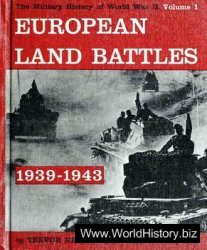Unlike Hitler's Nazi regime, there was no reluctance on the part of Stalin or his associates to sign death sentences. Stalin's files are full of matter-of-fact approvals of death sentences suggested by subordinates or by his own requests for capital punishments. There are literally hundreds of execution orders signed by Stalin, and they can be broken down into approvals of mass executions, approvals of executions of specific persons, or orders to begin cases or campaigns that will result in executions.
A few examples:10
Coded telegram to Comrade Andreev in Saratov:
The Central Committee agrees with your proposal to bring the former workers of Machine Tractor Station No. 1138 to the courts and execute them.—Stalin, July 28, 1937.
Coded telegram to all Party Secretaries:
Considering it essential for the political mobilization of collective farmers in favor of destroying enemies in agriculture, the Central Committee requires party organizations to organize in every province and region two to three open show trials of enemies of the people and widely publicize the course of these trials in the local press.—Stalin, August 3, 1937.
To the Smolensk Party Committee:
I advise you to sentence the wreckers of the Andreevskii region to death and publish this in the local press.—Stalin, August 27, 1937.
Extract from the Central Committee minutes:
On the question of the NKVD: To approve the proposal of the Central Committee of Kazakhstan to increase the number of repressed counterrevolutionary elements in Kazakhstan of the first category [automatic death sentence] by 900 and the second category [automatic Gulag sentences] by 3,500, in all 4,400 persons.—Secretary of Central Committee [Stalin], December 15, 1937.
To regional Party Secretaries (coded):
In association with the trial of spies and wreckers Tukhachevskii, Uborevich [two respected marshals of the Soviet army], and others, the Central Committee proposes that you organize meetings of workers, and where possible peasants, and also meetings of Red Army units to issue resolutions about the necessity of death sentences. The trial should end this evening. The communication about the sentence [death] will be published tomorrow, that is June 12.—Secretary of Central Committee. Stalin, June 11, 1937.
Although these examples relate to the years of the Great Terror, Stalin had been issuing death sentences since the 1920s. For example, in a letter to his deputy Molotov dated August 16, 1929, Stalin ordered "two to three dozen wreckers from the finance ministry and state bank” to be shot, including "common cashiers.” In the same letter, he ordered "a whole group of wreckers in the meat industry must definitely be shot.”11
Although Stalin probably received pleasure from killing his personal rivals, his execution orders were calculated and ordered for a purpose, with Stalin even managing the associated public relations. Village executions taught that the countryside was filled with evil enemies anxious to destroy the achievements of collective agriculture. Increased execution limits signalled that Stalin welcomed more executions in the regions. The public demonstrations demanding the death of Marshals Tukhachevskii and Uborevich were to demonstrate that the death sentences that Stalin had ordered were demanded by the people, and not by Stalin (even though the demonstrations came after the execution sentence). The execution of cashiers was to shift blame for shortages to "evil wreckers” infiltrating the banks.




 World History
World History

![Stalingrad: The Most Vicious Battle of the War [History of the Second World War 38]](/uploads/posts/2015-05/1432581864_1425486471_part-38.jpeg)







